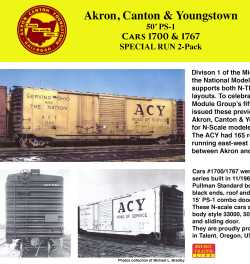By Jeff Moorman
Next Clinic:
The first clinic of the calendar year is this Thursday, January 7. The general topic will be demonstrating what can be done with DCC sound decoders. This will include sound equipment you can install in steam locomotives and some freight cars.
Prior Clinic:
We started by continuing the series of mini-talks on fallen flags. This time it was the Erie Railroad. Here are a couple of interesting facts:
- Before the country settled on “standard gauge” there were all sorts of gauges in use. For example, the Erie was originally constructed as 6-foot gauge.
- An Erie financier was once swindled out of $1,000,000 of Erie stock by a British con man who fled to Canada. At one point this led to a state governor wanting to call up his militia to invade our northern neighbor.


